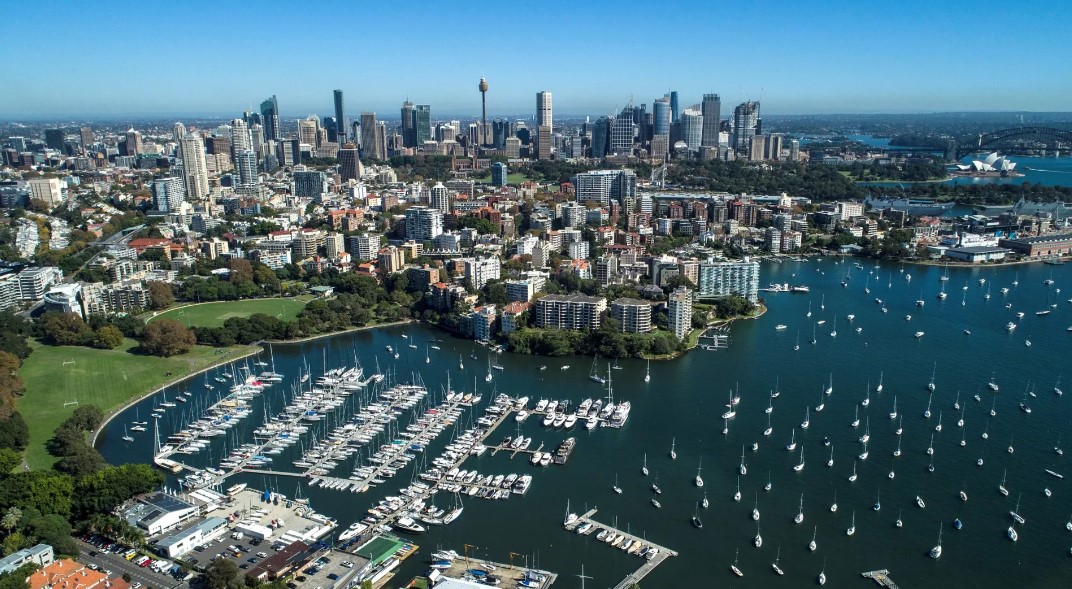Investing in marinas - the rising tide of alternative real estate
With a market value of ~$235 billion in Australia and underpinned by compelling demographic and structural changes driving demand, ‘alternative’ real estate is set to broaden its investment footprint.1
‘Alternative’ real estate assets offer experienced operators the ability to maintain and grow earnings against a backdrop of high inflation and a slowing economy. Unlike traditional real estate, and as explained in our recent insight, returns are directly linked to the earnings generated by running the businesses.
Marinas are a specialised alternative real estate asset providing a critical function within Australia’s recreational boating industry. Underpinned by positive sector fundamentals, marinas are a defensive investment generating operating cashflows that provide protection from inflation risk and the potential to deliver attractive long-term risk adjusted returns.


Marinas - A buoyant local industry
Boating is one of Australia’s largest and growing leisure industries. Nine out of 10 Australians live within 50 kilometres of the coastline and one in 10 holds a boating licence. The development of the marine industry has seen it evolve into a sector contributing ~$1.6 billion per annum to the Australian economy and with more than 925,000 registered vessels and 26,000 employed directly by the industry, recreational boating is an established and expanding sector.2
Australia has 34,000 kilometres of coastline and an extensive system of inland waterways serviced by around 300 marinas.3 Most of these marinas are located on the eastern seaboard (including Tasmania) and offer a total of around 65,000 storage spaces (including 50,000 wet berths) to house an increasing supply of recreational boats.4
Marinas are typically owned as either freehold going concern or under a long-term lease with a government entity. The Australian marina industry operates in a highly fragmented market – most are owned and operated privately or held in small portfolios and, to date, there has been limited institutional investment in the sector.
Looking outside Australia this is consistent with other markets. In the US, where there are approximately 12,000 marinas, the majority are owned individually with the largest single owner-operator holding a portfolio of just 134 marinas.5
However, marinas are an emerging institutional asset class. The returns on offer are increasingly attracting more sophisticated investors and as the sector matures it will gain access to institutional capital to facilitate investment in key growth drivers: economies of scale to extract greater operational efficiencies, and the integration of technology solutions to capture higher earnings and value upside.
Supported by strong fundamentals
The performance of marinas is supported by strong fundamentals, including consistent growth in the number of boat registrations. Over the past five years across New South Wales, Queensland, and Victoria the number of registrations has outpaced the supply of new marina berths.6
Additionally, there has been a proportionate increase in demand for longer vessels, i.e. those over 10 metres. As larger vessels require in-water storage (as opposed to dry berth or trailer storage) there has been persistent and surging demand for wet marina berths and moorings with accompanying services and amenities to enhance the overall boating experience.
Strict regulatory and environmental controls and limited land available for the development or expansion of marinas create a structural barrier restricting the supply of additional marina berths against a growing stock of boats requiring locations to store them. This offers existing operators a distinct operational advantage.
The case for investing in Australian marinas
It is too simplistic to describe marinas as just places for boats to ‘park’ on the water (wet berths and moorings). Modern marinas are diversified, full-service marine businesses aimed at meeting the wide-ranging needs of their customers.
Marinas generate consistent income from a range of services, several of which are essential to owning a boat – mooring or storage, regular servicing, and fuel. Almost 90% of marina earnings arise from recurring, non-discretionary revenue sources. Whilst the primary source of revenue is from mooring and dry storage of boats, marinas also generate income from property rental (including cafes, restaurants, and boat repair specialists), boatyard services like repairs and cleaning, fuel sales, and ancillary services such as watercraft rental.
As an operating business, prices and margins for services can be managed which offers protection from inflation. With a stable revenue stream, based on essential services attached to owning a boat, marinas are less sensitive to rising prices and economic conditions relative to other real estate assets. In fact, marinas have a proven track record – including through the GFC – of generating resilient returns.7
Marinas also offer investors the potential to further diversify their investment portfolios as returns are generally uncorrelated to traditional forms of real estate where total return is more closely linked to broader economic performance.
Marinas - A unique investment opportunity
Marinas present a unique opportunity to invest in Australia’s vast maritime sector underpinned by positive supply/demand fundamentals. As an emerging asset class, yields remain favourable relative to core real estate. The strength and the recurring nature of revenue offers investors the opportunity for stable and durable income through a range of economic cycles along with the potential for attractive long-term risk adjusted returns.
Access a diversified portfolio of high-quality real estate investments
To learn more about our capabilities and investment solutions click follow or visit our website.
Footnotes
1. Alternative Investments Outlook 2023, JLL Research Australia 2022, (VIEW LINK)
2. Boating Industry Association, Boating Data Report Card, 28 July 2022, (VIEW LINK)
3. The Australian Marina Industry, July 2022, Marina Industries Association, (VIEW LINK). Number of marinas refers to marinas with 20+ wet berths, a marina manager, and a club. Australia’s Coasts and Estuaries, Australian Government, Geoscience Australia, (VIEW LINK)
4. The Australian Marina Industry, July 2022, Marina Industries Association, (VIEW LINK)
5. National Marine Manufacturers Association, latest data is 2021, (VIEW LINK). Safe Harbor Marinas, owned by Sun Communities, is the largest owner-operator of marinas (134 marinas) in the US. Sun Communities is a fully integrated US real estate investment trust listed on the New York Stock Exchange under the symbol: SUI, (VIEW LINK)
6. The Australian Marina Industry, July 2022, Marina Industries Association, (VIEW LINK)
7. MA Financial analysis of publicly available company disclosures
1 topic
